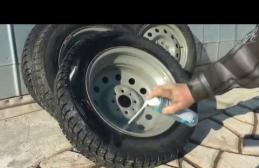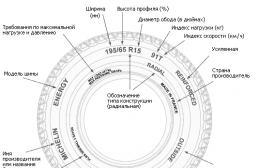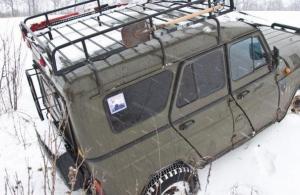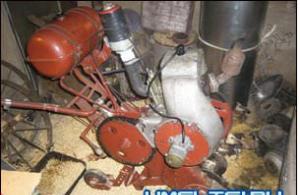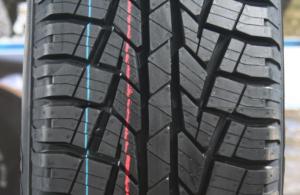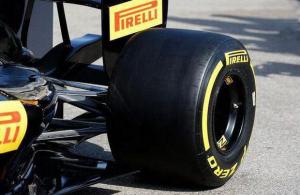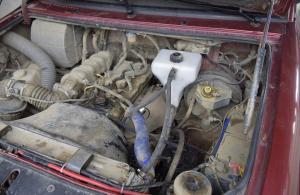The cooling system is filled year-round with a mixture of water and antifreeze with an anti-corrosion additive from the VW / SEAT concern. This mixture prevents freezing and corrosion of the cooling system, salt deposits and, in addition, increases the boiling point of the coolant. In the circulation loop, as a result of the expansion of the liquid during heating, an increased pressure is created, which also contributes to an increase in the boiling point of the coolant. The pressure is limited by a valve in the expansion tank lid that opens at a pressure of 1.4 to 1.6 bar. For the engine cooling system to function properly, a high boiling point of the coolant is required. If the boiling point is too low, vapor lock may form, which will impair engine cooling. Therefore, the cooling system must be filled with a mixture of water and antifreeze all year round.
It is necessary to use antifreeze G12 Plus (lilac color, exact designation G 012 A8F) or another concentrate marked "in accordance with VW / SEAT-TL-VW-774-F", for example, Glysantin-Alu-Protect-Premium / G30.
If the cooling system is filled with a mixture containing G12 antifreeze (red, exact designation G 012 A8D), then to replenish the coolant level, you can also use red G12 antifreeze or another concentrate marked “in accordance with VW / AUDI-TL-VW- 774-D ", for example Glysantin-Alu-Protect / G30. Note: G12 purple can be mixed with G12 red.
Caution: Do not mix red G12 antifreeze and older green G11 antifreeze as this can cause very severe engine damage. The brown coolant (the result of mixing G12 and G11 antifreezes] must be replaced immediately.
Indication: If an incorrect specification of antifreeze fluid accidentally appears in the cooling system, the system must be flushed. To do this, all liquid from the cooling system must be completely drained and the system must be filled with clean water. Let the engine idle for two minutes. Drain the water again and blow out the system from the side of the expansion tank with compressed air to empty it completely. Tighten the drain plug and fill the cooling system with a mixture of water and G12-Plus antifreeze.
Attention: To replenish the cooling system (also in warm seasons), only use a mixture of G12-Plus (lilac color) with soft clean water. The proportion of antifreeze should not be lower than 40% even in summer. Therefore, when replenishing the cooling system antifreeze should always be added with water.
In our latitudes, the coolant must provide frost protection down to -25 ° C, and even better - down to -35 ° C. The proportion of antifreeze must not exceed 60% (protection against freezing of the coolant down to -40 ° C), otherwise the protection against freezing and the cooling effect of the liquid will be reduced. Note: depending on the vehicle equipment, the amount of coolant to be poured in may slightly differ from the values indicated in the table
Ratio of coolant components in liters
Each car is equipped with a cooling system, which protects the engine from overheating. A malfunction of the cooling system or the absence of coolant in the car entails the most unpleasant consequences, therefore it is important to know how much fluid needs to be poured onto the UAZ Patriot SUV, as well as how it is drained and replaced. Consider these and many other issues in this material.
Previously, automobiles used water or distilled water in the cooling system. Unfortunately, the use of ordinary water leads to unpleasant consequences, in particular, its freezing in the system entails serious damage. Coolant called antifreeze or antifreeze is poured into the UAZ Patriot SUV, as indicated in the manual for the vehicle. It is antifreeze and antifreeze that are those liquid substances, which include many different substances that ensure non-freezing at subzero temperatures, and at the same time stable heat removal from the car engine to the radiator.
The radiator, in turn, is a container that cools the incoming liquid with an air flow. Thus, the coolant circulates through the system, thereby removing heat from the engine and protecting it from overheating. If the engine overheats, it will jam, therefore, on all cars, including an SUV, there is a temperature gauge in the cabin on the instrument panel. When the temperature rises above 100 degrees Celsius, you should immediately stop and find the cause of this phenomenon.

Replacement features
Probably more than once every driver wondered how often it is necessary to change the coolant? Just like all fluids in a car, antifreeze and antifreeze must be replaced, since over time they lose their original properties and can malfunction. It is recommended to change the coolant on an SUV every 60,000 km. Such a replacement is recommended in order to avoid clogging of the channels, so we will consider what this process is.
Before proceeding with the replacement, you must purchase an SUV coolant. There are a lot of types of coolant and which product to give preference to is the right of everyone. But, of course, it is not recommended to purchase the most budgetary options, since they, most likely, contain cheap types of thinners in their composition. How much antifreeze is needed for an UAZ Patriot SUV? The amount of coolant in the UAZ Patriot system is 12 liters, but when replacing it is not always possible to drain all the liquid completely. Therefore, it is better to purchase a 10-liter canister, and then buy another liter - two, if the need arises. Often, drivers are faced with a problem when replacing antifreeze leads to the fact that only 5 liters can fit into the system. In fact, during the filling of the coolant, air locks are created, limiting the complete filling of the system. Therefore, we will consider how the coolant is replaced correctly and what you need to know.

We drain the liquid from the block through the tap
Replacement
Replacing antifreeze on the Patriot is not particularly difficult, but it is important to follow the sequence. Of the replacement tools, you only need a "14" spanner. The replacement process is as follows:


Antifreeze for UAZ Patriot
The table shows - the type and color of the required antifreeze for filling in the UAZ Patriot,produced from 2013 to 2019.
| Year | Engine | A type | Color | Lifetime | Recommended manufacturers |
| 2013 | gasoline, diesel | G12 ++ | Red | from 5 to 7 years | FEBI, VAG, Castrol Radicool Si OAT |
| 2014 | gasoline, diesel | G12 ++ | Red | from 5 to 7 years | Frostschutzmittel A, FEBI, VAG |
| 2015 | gasoline, diesel | G12 ++ | Red | from 5 to 7 years | MOTUL, VAG, Castrol Radicool Si OAT, |
| 2016 | gasoline, diesel | G12 ++ | Red | from 5 to 7 years | Freecor QR, Freecor DSC, FEBI, Zerex G |
| 2017 | gasoline, diesel | G12 ++ | Red | from 5 to 7 years | VAG, FEBI, Freecor QR, Zerex G |
| 2018 | gasoline, diesel | G12 ++ | Red | from 5 to 7 years | MOTUL, VAG, Glysantin G 40, FEBI |
| 2019 | gasoline, diesel | G12 ++ | Red | from 5 to 7 years | MOTUL, Glysantin G 40, FEBI, VAG |
When buying, you need to know the shade - Color and A type antifreeze approved for the year of manufacture of your Patriot. Select the manufacturer at your discretion. Do not forget - each type of fluid has its own service life.  For instance: for UAZ Patriot (1st generation) 2013 onwards, with a gasoline or diesel engine type, lobrid antifreeze class, type G12 ++ with shades of red is suitable. The approximate next replacement time is 7 years. If possible, check the selected fluid against the vehicle manufacturer's specifications and service intervals. It's important to know Each type of liquid has its own color. There are rare cases when a type is tinted with a different color.
For instance: for UAZ Patriot (1st generation) 2013 onwards, with a gasoline or diesel engine type, lobrid antifreeze class, type G12 ++ with shades of red is suitable. The approximate next replacement time is 7 years. If possible, check the selected fluid against the vehicle manufacturer's specifications and service intervals. It's important to know Each type of liquid has its own color. There are rare cases when a type is tinted with a different color.
The color of red antifreeze can be from purple to light pink (green and yellow have the same principles).  Mix liquid from different manufacturers - can if their types match the mixing conditions. G11 can be mixed with G11 analogues
G11 cannot be mixed with G12
G11 can be mixed G12 +
G11 can be mixed G12 ++
G11 can be mixed G13
G12 can be mixed with G12 analogues
G12 cannot be mixed with G11
G12 can be mixed with G12 +
G12 cannot be mixed with G12 ++
G12 cannot be mixed with G13
G12 +, G12 ++ and G13 can be mixed with each other
Mixing of Antifreeze with Antifreeze is not allowed. No way! Antifreeze and Antifreeze are very different in quality. Antifreeze is the trade name of the traditional type (TL) of the old-style coolant. At the end of its service life, the liquid completely discolours or becomes very dull. Before changing one type of fluid to another, flush the car's radiator with plain water.
Mix liquid from different manufacturers - can if their types match the mixing conditions. G11 can be mixed with G11 analogues
G11 cannot be mixed with G12
G11 can be mixed G12 +
G11 can be mixed G12 ++
G11 can be mixed G13
G12 can be mixed with G12 analogues
G12 cannot be mixed with G11
G12 can be mixed with G12 +
G12 cannot be mixed with G12 ++
G12 cannot be mixed with G13
G12 +, G12 ++ and G13 can be mixed with each other
Mixing of Antifreeze with Antifreeze is not allowed. No way! Antifreeze and Antifreeze are very different in quality. Antifreeze is the trade name of the traditional type (TL) of the old-style coolant. At the end of its service life, the liquid completely discolours or becomes very dull. Before changing one type of fluid to another, flush the car's radiator with plain water.
The coolant in the UAZ Patriot car, as in all cars with internal combustion engines, is used to maintain the operating temperature of the engine during its continuous operation, that is, for intensive cooling. The UAZ Patriot engine cooling system contains about 9 liters of coolant, this must be taken into account when draining it, in order to select a container for collection. Also, the amount of coolant you need to know in the case of purchasing a new coolant, to replace the old one.
So, after buying a coolant, be it antifreeze or antifreeze, that's your choice, we begin to replace it. By the way, when choosing a coolant, it will be useful to know information about what to take after all. Such information is given in the article "What is better antifreeze or antifreeze." It is also worth mentioning the frequency of replacement of the coolant with the UAZ Patriot. The manufacturer recommends changing the coolant every 60,000 km or every 2 years. However, many UAZ Patriot car owners are forced to change the coolant already at TO1 (10,000 km), since the quality of the filled coolant leaves much to be desired.
The process of replacing the UAZ Patriot coolant
To replace the coolant on a UAZ Patriot car, you need a 14 key.
Initially, open the heater (stove) valve of the cooling system using the regulator in the passenger compartment, turning it clockwise as far as it will go.

Unscrew the cap on the expansion tank

Next, remove the engine protection, since it will be impossible to drain the coolant and get to the tap on the engine block and the plug on the radiator without removing the protection.
Unscrew the plug on the radiator and drain the coolant from the radiator into the prepared container.

Then open the valve on the engine block and drain the coolant from the engine block. Also use a container to drain the coolant.


Run the engine for a few minutes. Part of the coolant will go into the cooling system, displacing air locks. Top up the coolant expansion tank again to the required level.
Note: Change the coolant when the engine is cold, as there is a risk of burns. In addition, the coolant contains toxic substances that evaporate more actively and act on the human respiratory system if they warm up.
According to the requirements of the factory operating instructions, the cooling system of UAZ vehicles should use all-season coolants of the OZH-40 and OZH-65 "Lena" brands, TOSOL A-40M, TOSOL A-65M, or OZH-40 and OZH-65 TOSOL-TS ...
It is, of course, necessary to follow the manufacturer's requirements, however, in modern realities, when the choice of various antifreezes and antifreezes on the store shelves is large enough, you can always choose a more technologically advanced and perfect coolant for the cooling system of your car, if you wish.
In specialized stores, ready-to-use coolants are sold with the names Antifreeze and Antifreeze. All of them, with very rare exceptions, are suitable for use in UAZ vehicles. Despite the different names, Antifreeze, as a rule, is the same Antifreeze, only with slightly better performance characteristics. They will be discussed in more detail below.
The filling volume of the cooling system of UAZ vehicles.
- UAZ Patriot, UAZ Pickup and UAZ Cargo with the ZMZ-409 engine - 12.0 liters.
- UAZ Patriot, UAZ Pickup and UAZ Cargo with a ZMZ-409, ZMZ-51432 CRS engine and a radiator with horizontal pipes, as well as an Iveco F1A engine - 14.0 liters.
- UAZ Hunter models UAZ-315195 and UAZ-315148 - 12.5 liters.
- UAZ Hunter model UAZ-315143 - 16 liters.
- UAZ-3153, UAZ-31519, UAZ-315194 - 11.5 liters.
- Van UAZ-374195 and a truck with a double cab and a wooden loading platform UAZ-330395 - 12.7 liters.
- Ambulances and UAZ-396255, UAZ-390995 Farmer and UAZ-220695 bus - 13.7 liters.
- A truck with an increased base UAZ-330365 and a utility vehicle with an increased base UAZ-390945 - 13.6 liters.
The interval for replacing the coolant in the cooling system of UAZ vehicles, reuse of antifreeze or antifreeze drained from the system.
According to the service book for 2015, the manufacturer recommends completely replacing the coolant every 60,000 kilometers or after 4 years, whichever comes first. In fact, the replacement interval should be calculated taking into account the operational properties of the filled in antifreeze or antifreeze. In case of vehicle operation in difficult conditions, it is recommended to shorten the interval for changing the coolant in the cooling system of UAZ vehicles. The plant refers to difficult conditions:
- towing,
- for the most part, short trips of 4-5 kilometers or long distance trips at low speed,
- continuous operation in large cities,
- continuous operation in areas where the air temperature often goes beyond the range from minus 15 to plus 30 degrees Celsius,
- frequent use on dirty and dusty roads, as well as roads where chemical reagents are used to process the web.
In addition, the need to replace the coolant occurs if:
- Its service life has reached or exceeded the terms specified by the manufacturer.
- There were leaks or coolant, after which water or other manufacturer's fluid was added to the cooling system.
- When the color or shade of the coolant changes, which are the first signs of loss of performance of the additives.
- If other liquids enter the coolant, for example from the engine lubrication system.
When repairing an engine or cooling system, when the coolant is drained, its reuse is allowed if a clean funnel and container were used for draining and storage. It is advisable to filter the coolant before reuse.

Antifreeze - types and composition.
The term "Antifreeze" (Antifreeze) originated abroad. It was used to refer to a concentrate that was added to water in a car's engine cooling system. However, this term then took into account only the cold-protective role of this product, assuming that its use is a seasonal requirement.
Now the name Antifreeze means not only the cold-protecting properties of the product, but also reflects its function as a heat exchange medium, designed to protect the engine cooling system from corrosion and damage all-season in all operating conditions.
Automotive antifreezes usually consist of ethylene glycol, less often propylene glycol, which, unlike ethylene glycol, is not toxic, but costs much more water and additives. Ethylene glycol is poisonous and can enter the human body through the skin. Most dangerous if drunk.
The ethylene glycol solution is quite aggressive to the materials of parts - steel, cast iron, aluminum, copper, brass, solder. Therefore, a complex of additives is added to the antifreeze, giving it anti-corrosion, anti-cavitation and antifoam properties. Ethylene glycol, in addition to lowering the freezing point, leads to an increase in the boiling point of the coolant, which is an additional advantage when operating cars in the warm season.
Dyes are also added to antifreezes, giving them one or another color, which has nothing to do with its operational properties. Color is mainly needed to distinguish one fluid from another, to determine the coolant level in the expansion tank, and to distinguish coolant leaks from other operating fluids.
Currently, according to the composition of functional additives, antifreezes are conventionally divided into four types: carboxylate (OAT), hybrid (Hybrid), lobrid (Lobrid) and traditional (Traditional). Carboxylate antifreezes G-12, G-12 + contain corrosion inhibitors based on organic (carboxylic) acids and have the longest service life - more than 5 years.
Hybrid antifreeze G-11 contains, in addition to organic (carboxylate) inhibitors, also inorganic inhibitors - silicates, nitrites or phosphates. Service life 3-5 years. Lobrid antifreeze G-12 ++, G-13 is a relatively new type of coolant, in which an organic base is combined with a small amount of mineral inhibitors.
Traditional antifreezes contain inorganic substances as corrosion inhibitors - silicates, phosphates, borates, nitrites, amines, nitrates and their combinations. Antifreezes of this type are already considered morally obsolete due to their short service life of about 2 years and their inability to withstand high, more than 105 degrees, temperatures for a long time. Antifreeze and its numerous modifications just belong to the traditional type of antifreeze.
Antifreeze Standards.
There are no uniform standards for antifreeze, but there are the most recognized ones. For example, American ones - ASTM D 3306, D 4340, D 4985 and SAE J1034, English - BS 6580, B55117, Japanese - JIS K 2234, French - AFNOR NF R 15-601, and German - FVV HEFT R 443.
As with engine oils, some automakers may specify their own tolerances for antifreeze. For example, for Audi, Seat, Skoda and VW it is TL 774D (G12), F (G12 +), for Mercedes-Benz - 325.3, for Renault and Ford - WSS-M97B44-D.
Antifreeze - types and composition.
TOSOL is the name of an automobile coolant developed in 1971 for VAZ cars instead of the Italian "PARAFLU" by specialists from the State Research Institute of Organic Chemistry and Technology. The first three letters of the abbreviation TOSOL indicate the department of organic synthesis technology, and the letters OL are added to get a word similar to the name of alcohols - ethanol, butanol, methanol. According to another version, "OL" is an abbreviation of the Separate Laboratory that developed antifreeze.
The TOSOL trade mark has not been registered, therefore it is widely used by all coolant manufacturers. The performance properties of these fluids vary and depend on their composition. Antifreeze, like antifreeze, is a solution of ethylene glycol, water and various additives.
TOSOL A-40M consists of 44% water and 56% ethylene glycol, and provides a boiling point at normal atmospheric pressure - not less than 108 degrees. It is recommended to use it in areas with an ambient temperature of at least minus 40 degrees. TOSOL A-65M consists of 35% water and 65% ethylene glycol, and boils, at normal atmospheric pressure, at a temperature of at least 110 degrees. It is recommended to use it in the Far North and equivalent areas.
Outwardly, standard TOSOL A-40M is most often a blue liquid, and TOSOL A-65M is red. A change in the color of antifreeze during operation signals the loss of its operational properties. In particular, the development of corrosion inhibitors, and the need for replacement. For example, blue TOSOL A-40M, as it ages, first becomes blue-green, then green, then yellow and may completely discolor.
The rate of aging and color change of antifreeze depends on the operating temperature of the coolant. In particular, when the engine is running with constant overheating, of the order of 100-105 degrees and above, the antifreeze can turn yellow and lose its quality after several hundred hours of engine operation.
Aged antifreeze, due to the development of additives, can cause a thick layer of scale to form in the system. This can lead to deformation of parts, local and excessive thermal expansion, corrosion of aluminum blocks and cylinder heads.
Compatibility of coolants, is it possible to mix antifreeze and antifreeze.
During vehicle operation, the liquid level in the cooling system may become lower due to water evaporation or leaks. In the first case, you need to top up with distilled water, and if it is not there, then filtered and boiled water. In the second - antifreeze or antifreeze of the same brand.
Antifreeze and antifreeze produced by different manufacturers according to the same technical conditions, it is permissible to mix. However, if the specification numbers are not the same, then it is best not to. The components of the additive complexes can react with each other and lose their beneficial properties. In extreme cases, with large losses of coolant, it is best to add water to the cooling system, and then, as soon as possible, completely replace all the liquid in the cooling system.

